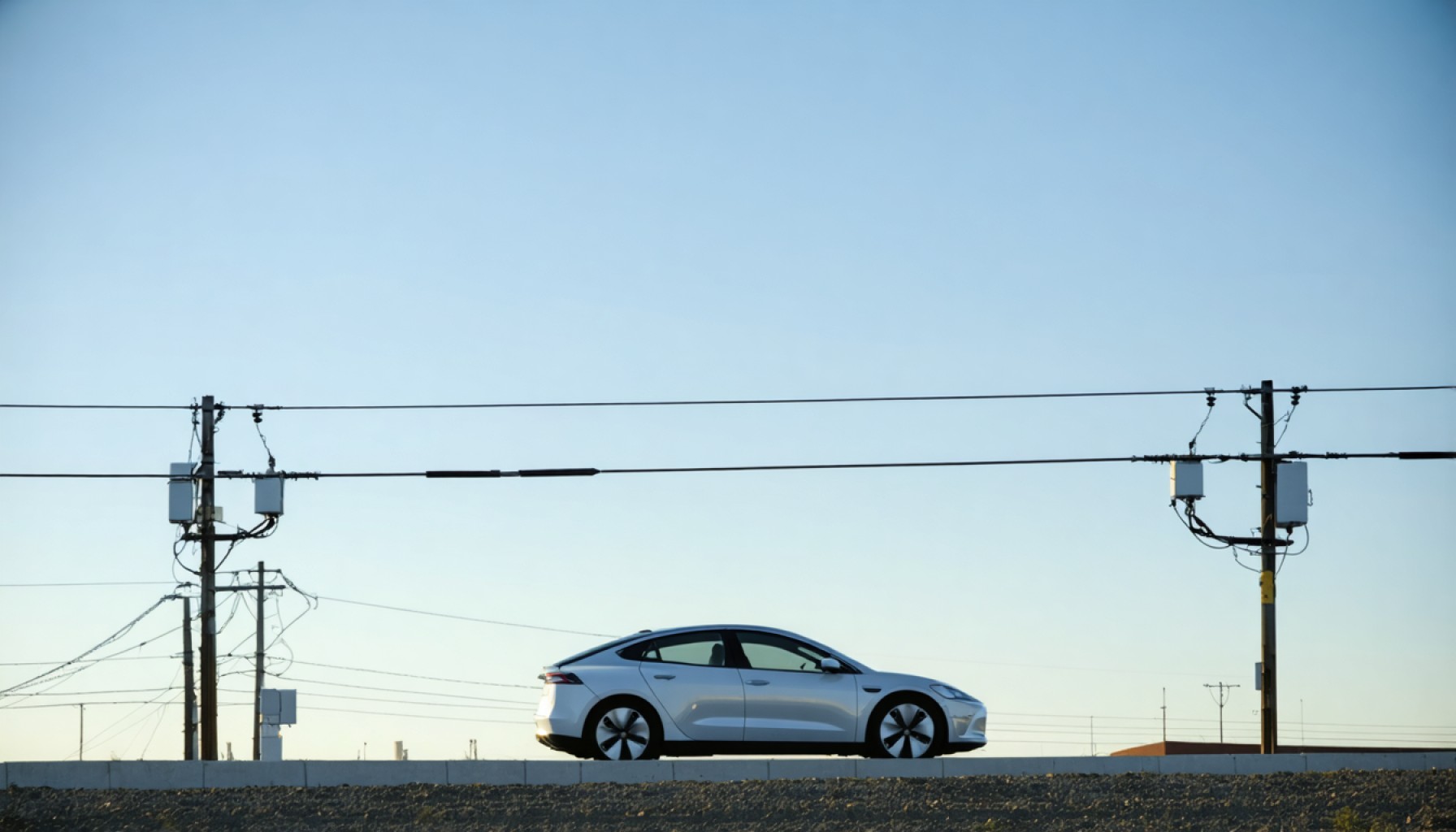
- The DMV region is experiencing a surge in electric vehicles, but progress is hindered by federal funding freezes.
- Trump administration’s halt on NEVI grants impacts Maryland and Virginia’s EV growth and infrastructure plans.
- Maryland saw a 37% increase in EV registrations in 2024, but the $3,000 excise tax credit has run out, leaving buyers on waiting lists.
- Virginia’s EV rebates are uncertain, with funds yet to be released, frustrating potential EV owners.
- Municipal fleets and businesses face limited, fragmented incentives, affecting plans for greener transitions.
- $140 million intended for EV infrastructure in D.C. is on hold, stalling charging network expansion.
- Maryland continues to support public fleet conversions through its Clean Fuels Incentive Program.
- A late 2024 “Trump bump” saw a temporary spike in EV sales, but long-term enthusiasm depends on stable federal assurances.
- The DMV region aims to balance climate goals with fiscal challenges, keeping electrification efforts alive.
The streets of the DMV (District of Columbia, Maryland, and Virginia) hum with the quiet acceleration of electric vehicles, emblematic of a tech-infused future that promises cleaner transportation. Yet, the charge into this era faces growing impediments that could slow this once-accelerating journey.
Beneath the shadow of federal shifts, the dynamism that once charged the EV trend in this region appears threatened. The Trump administration’s decision to halt new grants under the National Electric Vehicle Infrastructure (NEVI) program stalls the vital fuel of progress: funding. Without this support, the optimistic momentum enjoyed by states such as Maryland and Virginia faces an unanticipated pause.
In Maryland, a notable surge in electric vehicle registrations witnessed a 37% increase in 2024 alone, positioning nearly 127,000 electric cars on the road. But the excitement of this spike is tempered by diminishing resources. The beloved $3,000 excise tax credit tapped out ahead of schedule, forcing eager buyers onto a waiting list. Across the border, Virginia’s anticipated EV rebates flounder in uncertainty, as promised funds remain locked without clear timelines for release. This leaves prospective EV owners staring at invisible help, tantalizing yet inaccessible.
Municipal fleets and businesses scouring for greener options meander through fragmented aid—piecemeal incentives and competitive grants are the best available, often skewed toward underserved regions, leaving urban centers in planning limbo.
In Washington, D.C., where benefits like excise tax exemptions and reduced registration fees cushion EV purchasers, the freeze holds $140 million intended for vital infrastructure—EV charging networks parked in bureaucratic delay.
However, the spirit of innovation persists. Maryland’s Clean Fuels Incentive Program still waters the green dreams of public fleet conversions. Businesses in the area are veering toward alternative incentives such as solar canopy grants, even as financial narratives grow more complex.
Yet, the real test remains. Will the enthusiasm for electric vehicles falter amid this guessing game? A noticeable, albeit brief, spike in sales at the end of 2024—dubbed the “Trump bump”—saw consumers rush to secure vehicles ahead of regulatory reversals. Yet the absence of certain federal assurances leaves both enthusiasts and industry insiders gauging if these winds of change may cool investment fervor.
In essence, the DMV stands at a crossroads between climate goals and fiscal realities. The electric road ahead requires finding a balance between ambition and grounded financing. As long as state officials—and the community—remain steadfast, the possibility remains alive for an electrifying re-charge of support and adoption. But for now, it’s a high-wire dance, with the safety net not entirely visible.
What You Need to Know About the Future of Electric Vehicles in the DMV
Understanding the Current Landscape of EV Adoption in the DMV
The District of Columbia, Maryland, and Virginia (the DMV) have experienced a significant increase in electric vehicle (EV) adoption. This shift is part of a larger effort to transition to cleaner transportation solutions. However, recent changes in federal policies and funding have created challenges that threaten the momentum of this transition.
Key Insights on EV Growth and Challenges
1. Rapid Adoption: In 2024, Maryland saw a dramatic 37% increase in EV registrations, bringing the total to approximately 127,000 electric cars on the road. This indicates strong consumer interest and a growing market for electric vehicles in the region.
2. Funding Roadblocks: The cessation of new grants under the National Electric Vehicle Infrastructure (NEVI) program by the Trump administration has stalled critical funding needed for further expansion and infrastructure development. This has made it challenging to maintain previous growth rates.
3. Depleted Incentives: In Maryland, the $3,000 excise tax credit, an important incentive for purchasing EVs, was exhausted early, resulting in a waiting list for potential buyers. In Virginia, EV rebates are still unfulfilled, causing uncertainty among prospective EV owners.
4. Infrastructure Delays: In Washington, D.C., funds amounting to $140 million intended for EV charging infrastructure are stalled due to bureaucratic delays, slowing down the deployment of vital charging stations.
5. Alternative Incentives: Despite these challenges, initiatives like Maryland’s Clean Fuels Incentive Program and solar canopy grants continue to support green transportation goals, although these solutions are often fragmented and insufficient to meet the high demand.
How-To Steps & Life Hacks for Prospective EV Owners
– Research Financial Incentives: Stay updated on state and local incentives, as these can offset the cost of EV ownership substantially. Websites like the U.S. Department of Energy’s Alternative Fuels Data Center provide up-to-date information.
– Plan for Charging Needs: Investigate existing charging infrastructure in your area. Apps like PlugShare can help you locate charging stations and plan longer trips effectively.
– Consider Home Charging Solutions: If possible, invest in a home charging setup to reduce dependency on public chargers and enhance convenience.
Market Forecasts & Industry Trends
– Growth Trajectory: Despite current funding challenges, the global and national EV market is expected to grow as technology advances and battery costs decrease.
– Policy Shifts: Future political changes could reinstate or introduce new incentives and funding options, potentially revitalizing growth in regions like the DMV.
Real-World Use Cases
– Urban Commuting: EVs are ideal for urban commuting due to their efficiency in stop-and-go traffic and the availability of charging stations in metropolitan areas.
– Fleet Conversions: Businesses and municipal fleets are exploring conversions to electric vehicles as part of sustainability initiatives, leveraging remaining state incentives.
Pros & Cons Overview
Pros
– Reduced emissions and environmental impact.
– Lower fuel and maintenance costs compared to traditional vehicles.
– Eligibility for various state and federal incentives.
Cons
– Initial higher purchase price.
– Inconsistent funding and support.
– Limited charging infrastructure in certain areas.
Actionable Recommendations
– Advocate for Policy Change: Engage with local policymakers to express support for increased EV incentives and infrastructure development.
– Community Initiatives: Participate in local forums and workshops to promote awareness and understanding of electric vehicle benefits.
– Stay Informed: Regularly check for updates on government policies and new technology developments in the EV space to make informed ownership decisions.
For those interested in the future of electric vehicles, the continued momentum in adoption requires active community and policy-making efforts. While the path forward is uncertain, strategic planning and advocacy can help overcome current challenges and lead to a more sustainable transportation future.
For more on electric vehicles and sustainability initiatives, visit Energy.gov.



